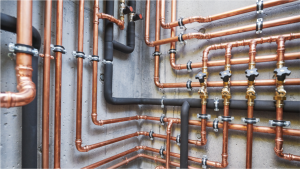When placed correctly, home security cameras are an affordable and viable alternative to costly, professional-installed systems. They are great tools for documenting and deterring crime.
It can be difficult for DIY security professionals to properly place cameras. You can’t afford to spend too much on security cameras to cover your home. Or, you could install them incorrectly which will make it easier for would-be thieves to subvert them.
We interviewed engineers and security product teams from Arlo, eufy, two DIY security companies, to get their advice on how to set up a home security system.
What number of cameras are you really going to need to protect your home from burglary? Are your cameras wired or wireless? Should they be visible or hidden? Can they record continuously or motion-activated? What other tech are you looking for, if any, aside from cameras? We can help you make your home’s security system more efficient and secure.
- Every entrance should be secured
Each property is unique, so it’s difficult to give specific advice to DIY-lovers. It is a good idea to inspect every entry point at ground level for anyone trying to enter your house.
Arlo advocated the idea of one per entrance and recommended that there be two to three outdoor cameras. eufy suggested one for each entrance and one for the back.
We asked if an indoor camera could be used to guard an entrance if it was pointed at a sliding glass door with its blinds closed.
Arlo rejected this idea. He noted that home security cameras use infrared sensors to detect motion and that glass can prevent infrared detection from functioning properly. It may not be able to detect an issue until someone actually enters your home.
However, they did recommend one of the top video doorbells to protect your front entrance.
- Cameras should be placed at the right height and distance
Arlo asked us what were the most common mistakes customers made when setting up their home security system. Mark Vartorella, an Arlo engineer, stated that customers often placed cameras in poor locations which limited their effectiveness.
Vartorella stated, “Number one: they need to be able to comprehend that the best range to detect motion is between 5 and 20 feet for passive infrared.” For the best readings, you should place your camera in the closest possible vicinity to the motion area.
Wide-angle outdoor cameras can be tempting to cover as much territory as possible. For example, you might place it in one corner of your backyard to protect the entire backyard. This will reduce its ability to detect motion and capture close-up footage at entry points.
It is equally important to position your cameras high above the ground and tilt them down. If you point down at a specific area, your camera’s infrared sensor will pick up more relevant movement.
For optimal motion detection, eufy suggested that your security cameras be placed 8-10 feet high. Then tilt them 15-30 degrees to maximize motion detection. Arlo suggested placing them at 7 feet.
Vartorella stated that customers also make the common mistake of pointing their cameras horizontally towards the street. Moving cars can trigger alerts even if they are not within the capture range of outdoor cams. Their hot engines act as blinding beacons to an Infrared sensor.
Your cams are securely mounted and pointed downwards at high-traffic areas, making it harder for intruders to get past them or to pull the camera down to steal it or disarm it.
- Consider keeping your outdoor cams visible
According to eufy’s research, most customers hide their cameras in order to capture footage of intruders and burglars. Arlo and eufy both agreed that visible cameras are sometimes more effective in home security prevention.
Independently, both companies told us that spotlight cameras can be very effective in deterring nighttime intruders.
According to eufy’s security team, a visible camera, or even a spotlight camera, would be recommended if the customer wishes to intimidate intruders or avoid porch pirates.
Cameras can also make potential robbers believe that your home is worth stealing. The Arlo team stated that visible cameras could prevent people from targeting your house, but they later said that they didn’t have enough data to prove that one method was better than another.
We don’t know the answer, but we wanted to share this tip anyway as a strategy.
- Check that your internet service can handle high-resolution cameras
While most security cameras are 1080p, some companies such as Arlo or eufy sell cams with a higher resolution of 2K and 4K. When you review your recordings, more pixels equals more actionable footage for suspicious characters.
Although higher resolution might seem obvious, Arlo’s Mark Vartorella explained that it is important to ensure that your network is capable of handling it. He explained that 4K streams require more bandwidth so upload speeds and bandwidth can be slow. This is especially true if multiple cameras are used or continuous recording is enabled.
While you may be able to pay for high download speeds most customers do not pay attention to upload speed. This is important if you want to upload video content to the cloud. Cheap coverage could make it difficult to get just one 4K camera or two 2K cameras with high FPS.
Before you buy your cameras, make sure to check the Mbps requirements of your network before purchasing them. For example, each 4K Arlo Ultra 2 requires between 2-4Mbps.
- Wired cams may be required by people who live in large brick houses or apartments.
Arlo’s team spent a lot of time extolling wireless cams during the interview. Wireless cams are easy to mount high up, or in other unusual places like trees. There is no need to worry about an intruder cutting your feed wire or finding an outlet.
They did however point out that signal interference could be a problem in certain homes and environments, making wired or Power over Ethernet cameras (PoE), more desirable.
Multi-story apartments may be inundated by signals from all directions. This can sometimes cause interference when trying to access live streaming wireless cams.
The main concern for homeowners is the distance between each security camera and router and any objects between them. According to the Arlo team, wireless cam signals might have more difficulty reaching cinder brick homes than those with thinner drywalls. The more your property is, the higher the chance that any wifi cam will have trouble communicating with your router.
- Local video storage is more affordable and safer than cloud storage
We asked eufy for recommendations on good security practices. The team narrowed down to one feature: local storage.
They suggested that you store your footage on a local SD Card, which can only be accessed by your mobile device using a secure encryption. This will not only protect your home but also ensure your privacy.
Most security companies charge a monthly fee for video storage on the cloud. Choosing storage-enabled cameras will save you money over the long-term. There’s always the possibility that someone could gain access to your private footage remotely by stealing your password.
You can also use local storage to enable continuous recording of your security cameras, but eufy stated outrightly that motion-activated recording is sufficient for most customers’ security needs.
- Smart lights and sensors can enhance your cameras
Arlo and Eufy shared similar advice regarding setting up security cameras, but the Arlo team had fewer words to say about non-camera security options than eufy.
Both groups were asked whether security cameras should be trusted as an all-in one security system or if customers should back up their cameras with door and window sensors.
Chanel O’Connor, an Arlo representative, stated that sensors can be useful, but information is what consumers need in emergency situations. Cameras provide more visual context and live data than any sensor.
According to the eufy team however, both sensors and cameras are needed in order to create a healthy home ecosystem. While cameras can provide actionable surveillance that you can respond to manually with the help of sensors, ‘door and window sensors can trigger instant sirens to deter intruders’ automatically.
When asked, eufy also supported smart home automations, particularly smart lights that can turn on when there is movement.
They told us that “lights turning on when a camera detects movement is definitely a very useful design, especially when it pertains to deterring package thefts.”
- Regular maintenance and checks are recommended
You are responsible for making sure your security cameras and self-monitoring video work properly. Otherwise, you could give yourself false security by using a lot of dead cameras. We have compiled a checklist using the information Arlo provided us.
- When setting up wireless cameras, ensure that you activate it on the same band and network (2.4 or 5.GHz) as the base or hub to which it connects.
- You can check the battery level and charge or replace batteries at home regularly so that your cam isn’t down for hours when you’re at work.
- You may have problems uploading your camera feed. Make sure you check your internet speed, modem health, and ISP data. Upgrade your equipment and provider
- To see if someone you don’t recognize makes a comeback, check your video clips
- To make space on your SD card, or cloud storage, delete any old, non-relevant recordings and store new, relevant clips
- To test the motion-activated alerts, walk slowly in front of each camera and ensure you get them all.









